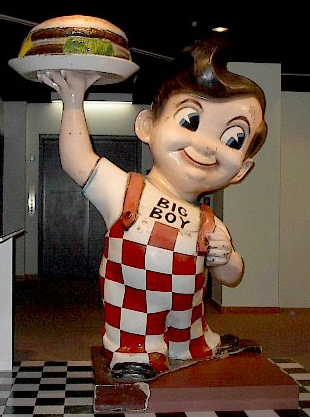 [Trends] All Utah males are now legally required to wear fauxhawks, but few think about what their hair is saying. In the immortal words of Timbuk3:
[Trends] All Utah males are now legally required to wear fauxhawks, but few think about what their hair is saying. In the immortal words of Timbuk3:Hairstyles and attitudes: Are they connected?'80s Mohawk--It would be easy to imagine that
Are the styles we embrace a matter of taste, or values rejected?
Hairstyles and attitudes: How do they relate?
How well do we use our freedom to choose the images we create?
 today's fauxhawk is simply a transformation of the 1980s glam-punk mohawk (which itself was a re-purposing of the 1940s-50s mohawk, supposedly based on a hairstyle sported by hunters of the Mohican nation.)
today's fauxhawk is simply a transformation of the 1980s glam-punk mohawk (which itself was a re-purposing of the 1940s-50s mohawk, supposedly based on a hairstyle sported by hunters of the Mohican nation.)However, where the fauxhawk seems to signal a friendly devotion to modern values and sweaters, as well as the presence of a Y chromosome, the glamhawk--which was worn by both men and women--signaled its wearer's readiness to shoot heroin and engage in listless sex. Even though it could be difficult to tell '80s punks apart when they were aggregated in large groups, the glamhawk positioned itself as nonconformist, whereas the fauxhawk makes no apology for its own mainstream tendencies.
'40s & '50s Mohawk--A much closer analogy can be made with the mohawk of the '40s and '50s which, existing as it did during the lead-up to McCarthyism, was more reticent to declare itself countercultural. That kind of loose talk could easily get a hairstyle thrown in jail or blacklisted. (Eventually, of course, it transformed itself into the pompadour favored by greasers and so maintained its countercultural cred.)
In fact, today's fauxhawk is most closely allied to the hairstyle worn by one of
 America's most beloved icons: J.B.'s Big Boy. Resembling a dollop of brown Dream Whip, it symbolizes egalitarian values, passable food and friendly service. (Brandon Burt)
America's most beloved icons: J.B.'s Big Boy. Resembling a dollop of brown Dream Whip, it symbolizes egalitarian values, passable food and friendly service. (Brandon Burt)

awesome article, but you should have kept going with it..i was itching for more
ReplyDeleteI Agree
ReplyDelete